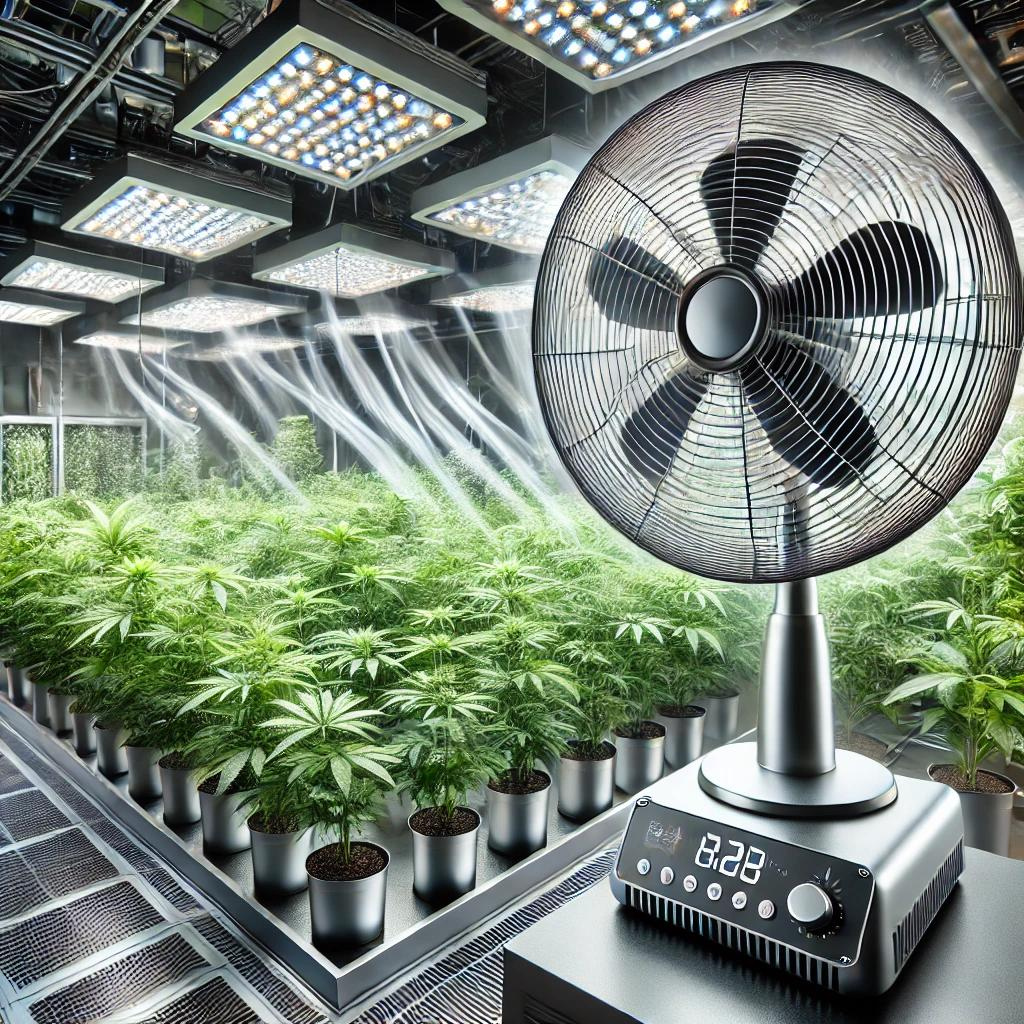The Importance Fans in Indoor Gardening
Cultivating plants indoors is an art that combines nature with technology. Indoor grow spaces provide a controlled environment where every variable can be fine-tuned to optimize plant health and yield. Among these variables, air circulation stands out as a critical factor often regulated by the use of fans. This long-form blog delves into the importance of fans in indoor grow spaces, discussing their roles, types, and best practices for maximizing their effectiveness.
The Importance of Air Circulation
Air circulation is paramount in an indoor grow space for several reasons:
- Temperature Control: Fans help distribute heat evenly throughout the grow space, preventing hotspots that can stress plants.
- Humidity Regulation: Proper air flow helps maintain optimal humidity levels, reducing the risk of mold, mildew, and other moisture-related issues.
- Gas Exchange: Plants need fresh air to perform photosynthesis efficiently. Fans ensure a steady supply of CO2 and the removal of oxygen.
- Stem Strength: Gentle air movement stimulates plants to develop stronger stems and branches, preparing them for the weight of fruits and flowers.
Types of Fans and Their Uses
Not all fans are created equal, and different types serve various purposes in an indoor grow environment:
- Oscillating Fans: These are the most common fans used in grow rooms. Their back-and-forth motion ensures air reaches all parts of the plant canopy.
- Inline Fans: Used in conjunction with ducting, inline fans are crucial for exhaust systems. They pull hot, humid air out of the grow space and can be connected to carbon filters to control odor.
- Clip-On Fans: Small and versatile, clip-on fans can be positioned to provide targeted airflow, making them ideal for smaller grow tents or spaces with limited floor space.
- Wall-Mounted Fans: These fans save valuable floor space and provide consistent air movement at canopy level, ideal for larger grow rooms.
Placement and Configuration
Strategic placement and configuration of fans are vital to ensure optimal air circulation:
- Oscillating Fans: Position these fans so they don't blow air directly onto plants, which can cause windburn. Instead, aim for the air to brush over the top of the canopy.
- Inline Fans: Install the intake low in the grow space to pull in the coolest air, and the exhaust high to remove the warmest air. Ensure the fan capacity is appropriate for the size of your grow space.
- Multiple Fans: In larger spaces, use multiple fans to create a 'circular' airflow pattern, ensuring no dead spots where air becomes stagnant.
Considerations for Fan Use
When incorporating fans into your indoor grow space, consider the following:
- Noise Level: Some fans can be quite noisy. Look for models designed for quiet operation if noise is a concern.
- Energy Efficiency: Fans will be running for extended periods. Opt for energy-efficient models to keep electricity costs down.
- Adjustability: Fans with adjustable speeds provide greater control over airflow, allowing you to reduce intensity if plants show signs of stress.
Best Practices
To get the most out of your fans, follow these best practices:
- Regular Maintenance: Keep fans clean and dust-free to ensure they operate efficiently.
- Monitor Plant Response: Watch how your plants react to the airflow and adjust the fan speed and position accordingly.
- Use Timers: Not all fans need to run 24/7. Use timers to control operation based on your plant's specific needs.
Conclusion
In the delicate ecosystem of an indoor grow space, fans play a crucial role in simulating the natural environment plants thrive in. By understanding the types of fans available, their proper placement, and how to use them effectively, growers can ensure their indoor gardens are not only surviving but thriving. Remember, the goal is to recreate the gentle caress of a natural breeze, not a windstorm. With the right approach, fans can be one of the most invaluable tools in your indoor gardening arsenal, fostering a healthy, vibrant grow space that yields bountiful results.

